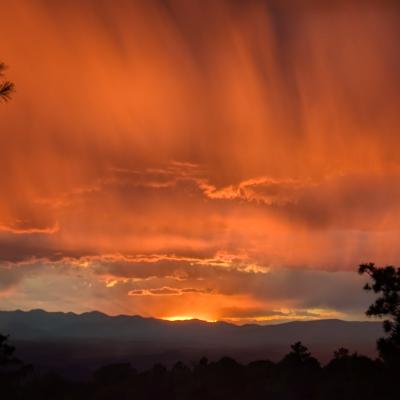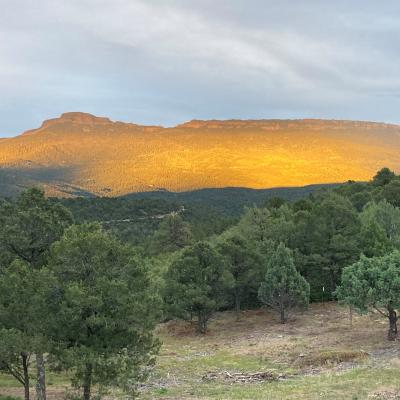The Power Of Lightning
The Power Of Lightninga
The Power Of Lightning
When I was building our house, I learned a very important lesson regarding lightning. It didn’t have to strike the house; this lesson happened with lightning strikes at least a half-mile away.
I was working on the east wall of the living room; at this point in the construction, the house was completely enclosed: windows, doors and metal roof installed, but no insulation or drywall yet in place. On that day, there was a typical, fairly active summer storm nearby. Suddenly, there was a lightning flash followed by a clap of thunder approximately 3 seconds later. Since sound travels roughly a mile in 5 seconds, I knew the flash was at least a half-mile away. But what got my attention was a loud “pop” that occurred at the same time as the flash; it didn’t wait for the thunder to arrive. AND, the “pop” was in the living room where I was working!
The pop occurred behind me, so I couldn’t pinpoint the location. I figured there would be more lightning, so I set up a chair and sat down facing in the general direction where I thought the “pop” had occurred. And waited…
Mother Nature did not disappoint. Within a minute or two, there was another lightning strike, another “pop” … and a spark! It occurred where the west wall of the living room, the south wall of the kitchen and the roof meet. So, what would cause that? At that point, I went into what I call “Diagnostic Mode”: figuring out what materials would cause a spark like that. It had to involve pieces of metal.
A quick aside: my background is in physics and electronics and computers, but the latter didn’t come into play.
Here’s what I determined:
- The roof is metal and attached to the roof decking with metal screws.
- The roof decking has aluminum foil on the bottom side; it’s there as a radiant barrier.
- The roof decking rests on the roof trusses.
- The roof trusses have metal plates on the sides and metal ties on top of the trusses.
- There is electrical wiring that is running right next to the metal plates.
So, what caused the spark? There was a continuous path from the metal roof to a metal plate right next to the wiring. There is a ground wire in the wiring that’s connected to the earth. But hold on! The electrical wiring sits in a sheathing that is protected to 600 volts. That meant the lightning strike, through static electricity, placed a charge on the roof in excess of 600 volts!
Next step: how to solve the problem? I hired a company out of Colorado Springs to install lightning rods on the roof (I don’t do roofs, but that’s an entirely different story). Those lightning rods are connected to RERALLY HEAVY copper-braided straps, and those straps are connected to 3 8-foot-long copper rods that are buried in the ground on three sides of the house.
One last step: after the lightning rods were installed, I noticed that there were rubber insulators under the lightning rods. I pointed it out to the installers and told them I wanted the lightning rods BONDED to the roof; they agreed, and the job was finished.
The final chapter: since that work was done, there have been no further problems. It was fortunate I happened to be in the living room when the storm occurred; it allowed me to diagnose and fix the problem and avoid a potential disaster after the insulation and drywall had already been installed.
My advice: MAKE SURE YOUR ROOF IS GROUNDED.
--Ernie Parker






